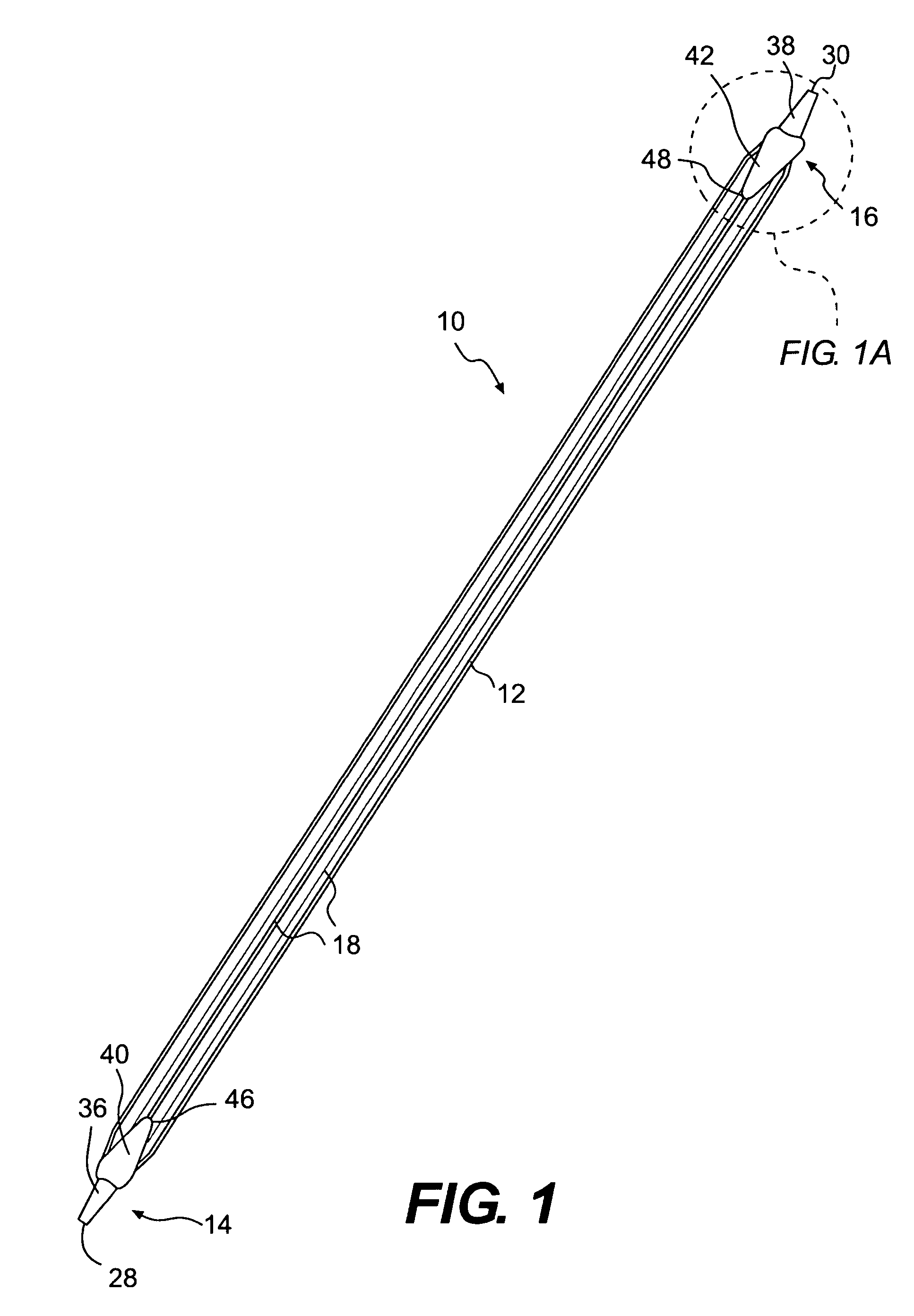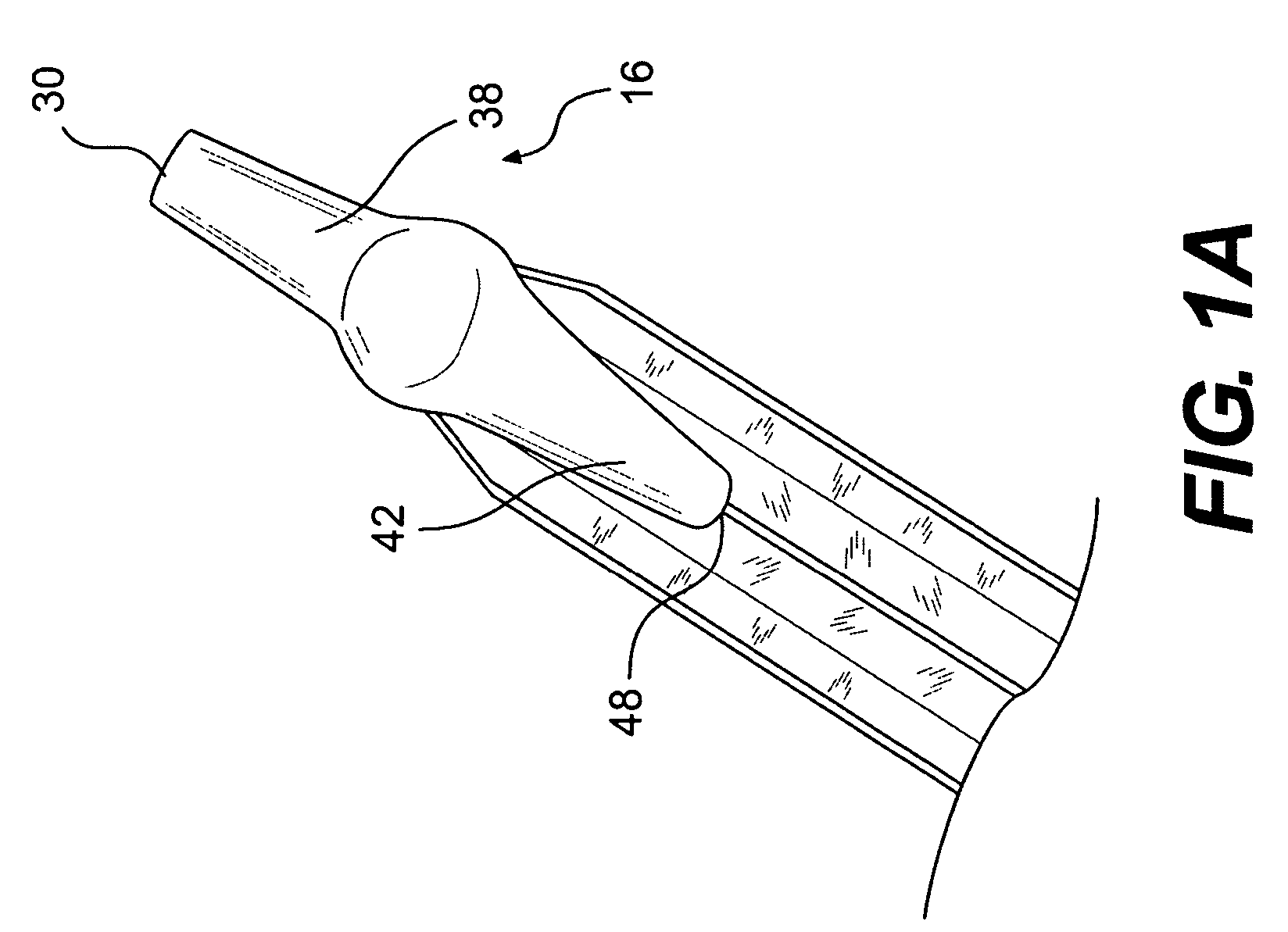Stent
a technology of stents and stents, which is applied in the field of stents, can solve the problems of limited operation life of stents, short remaining life, and high cost of metal stents, and achieve the effect of enhancing the retention of stents
- Summary
- Abstract
- Description
- Claims
- Application Information
AI Technical Summary
Benefits of technology
Problems solved by technology
Method used
Image
Examples
Embodiment Construction
[0046]A first embodiment of a stent 10 according to the invention is illustrated in FIGS. 1–5. The stent 10 is generally elongated and is sized to fit within a human's biliary or pancreatic duct. While the stent 10 of the present invention is intended for use in the common bile duct or pancreatic duct of a patient having a ductal occlusion or obstruction, the stent 10 may be used in other areas within the human body. Therefore, while the instant description focuses primarily on biliary and pancreatic ductal uses, the potential areas of use are not intended to be limited thereby. As would be appreciated by those skilled in the art, the stent 10 may find application to various arterial and venous obstructions or occlusions. Moreover, the stent 10 may be employed in other channels within the human body. In addition, the stent 10 is not limited solely to use in humans.
[0047]Having been designed for biliary or pancreatic use, the stent 10 preferably has a length L that is on the order of...
PUM
 Login to View More
Login to View More Abstract
Description
Claims
Application Information
 Login to View More
Login to View More - R&D
- Intellectual Property
- Life Sciences
- Materials
- Tech Scout
- Unparalleled Data Quality
- Higher Quality Content
- 60% Fewer Hallucinations
Browse by: Latest US Patents, China's latest patents, Technical Efficacy Thesaurus, Application Domain, Technology Topic, Popular Technical Reports.
© 2025 PatSnap. All rights reserved.Legal|Privacy policy|Modern Slavery Act Transparency Statement|Sitemap|About US| Contact US: help@patsnap.com



